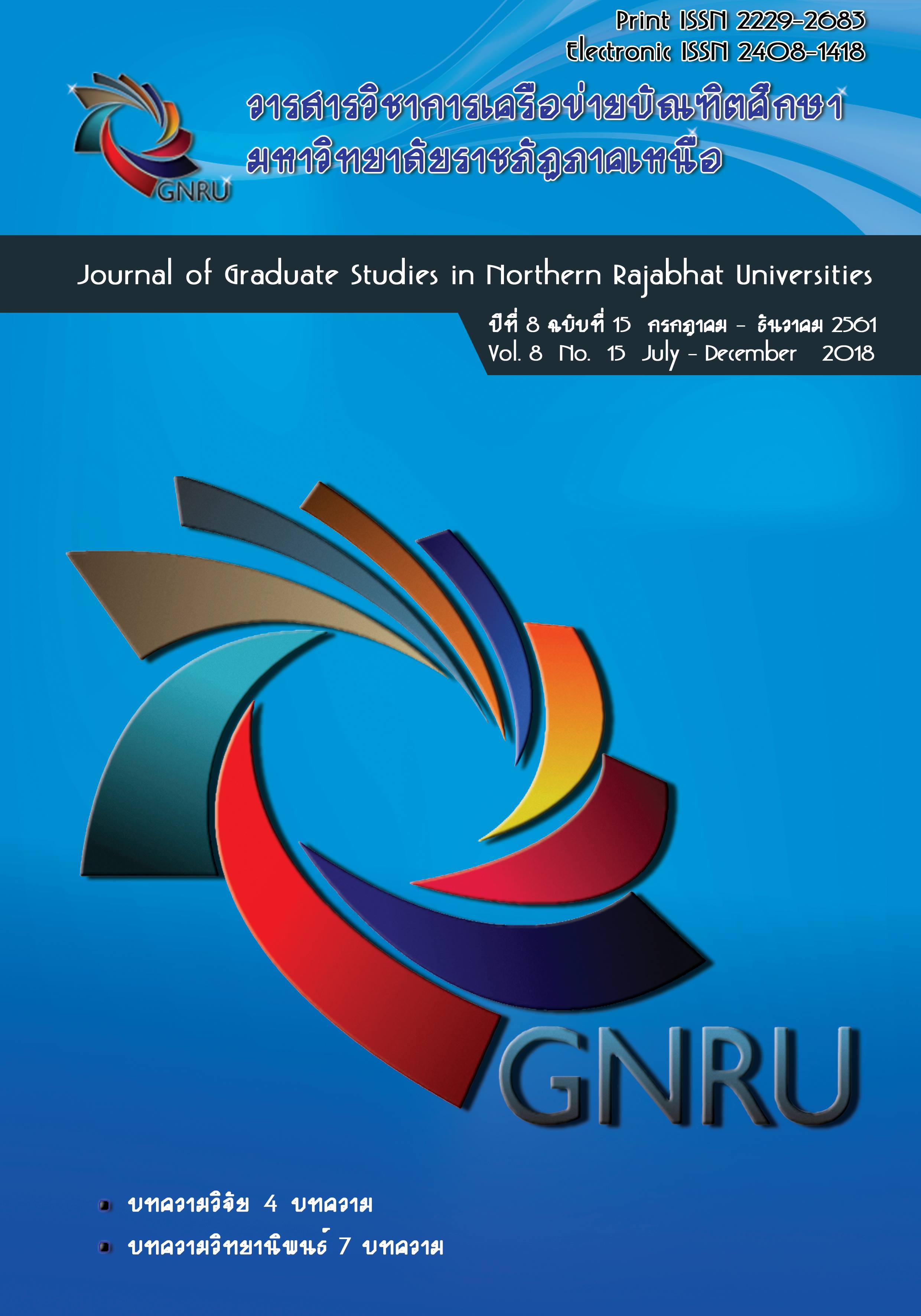การวิเคราะห์ข้อผิดพลาดทางภาษา ในการเขียนประโยคภาษาอังกฤษ An Analysis of Syntactic Errors in English Writing
Main Article Content
Abstract
การศึกษาครั้งนี้มีวัตถุประสงค์ เพื่อศึกษาข้อผิดพลาดทางภาษาที่พบในการเขียนประโยคภาษาอังกฤษของนักศึกษาไทย และเพื่อวิเคราะห์หาสาเหตุของข้อผิดพลาดดังกล่าว โดยได้ทำการศึกษาจาก นิสิตวิชาเอกภาษาอังกฤษชั้นปีที่ 4 ภาควิชาภาษาไทยและภาษาต่างประเทศ คณะศิลปศาสตร์และวิทยาการจัดการ มหาวิทยาลัยเกษตรศาสตร์ วิทยาเขตเฉลิมพระเกียรติ จังหวัดสกลนคร จำนวน 36 คน เครื่องมือที่ใช้ในการเก็บข้อมูล คือการเขียนย่อหน้าที่มีกับคำแนะนำ และการเขียนย่อหน้าแบบอิสระ
ผลการศึกษา จากข้อผิดพลาดที่แบ่งตามกลุ่มความถี่ของข้อผิดพลาดจากงานเขียนทั้ง 90 ชิ้น และข้อผิดพลาดที่แยกเป็นรายบุคคล พบว่า ข้อผิดพลาดที่มีความถี่สูงที่สุดมี 4 กลุ่ม คือข้อผิดพลาดเกี่ยวกับคำนำหน้านาม ข้อผิดพลาดเกี่ยวกับคำนามเอกพจน์และพหูพจน์ ข้อผิดพลาดของโครงสร้างที่ไม่สมบูรณ์ และข้อผิดพลาดของการใช้คำบุพบท ในข้อผิดพลาดแต่ละข้อ พบว่ามีอัตรามากกว่าร้อยละ 80 ของงานเขียน นอกจากนั้นยังพบว่า สาเหตุของข้อผิดพลาดที่เกิดขึ้นในการเขียนส่วนใหญ่ เป็นผลมาจากการแทรกแซงของภาษาแม่ ซึ่งสามารถแบ่งออกเป็นข้อผิดพลาดที่เกิดจาก การแปลแบบคำต่อคำ การใช้โครงสร้างภาษาไทยในการเขียนภาษาอังกฤษ และการใช้คำคุณศัพท์เป็นคำกริยาหลัก
This study aimed to investigate persisted syntactic errors found in English writing by Thai students and to analyze the causes of those errors. The participants were 36 fourth-year students majoring in English, Thai and Foreign Languages Department, Faculty of Liberal Arts and Management Science, Kasetsart University Chalermprakiat Sakonnakhon Province Campus. Two writing tasks designed to collect the data were writing with prompts and free paragraph writing. 90 pieces of writing produced by the participants were analyzed according to the types of persisted syntactic errors including a group error and an individual error, ranging in percentage from the highest to the lowest. From the study, 1002 errors were found, and the four highest-frequency areas of the group persisted syntactic errors made by all the students in their writing were determiner errors, singular and plural noun errors, incomplete structure errors, and preposition errors respectively. In term of the individual errors found at the rate of more than 80 percent of the two writing tasks. The four highest-frequency areas of errors were slightly different from the group error results. Furthermore, it was found that the persisted errors in writing were mainly resulted from the mother tongue interference which could be categorized into word-by-word translation, the use of Thai structure in English writing, and the use of adjectives as main verbs.
Article Details
References
Alamin, A. & Ahmed, S. (2012). Syntactical and Punctuation Errors: An Analysis of Technical Writing of University Students Science College, Taif University, KSA.
Bjork, L., & Raisanen, C. (1997). Academic Writing: A University Writing Course. Lund, Sweden: Studentlitteratur.
Corder, S. P. (1981). Error Analysis and Interlanguage. Oxford: Oxford University Press.
Corson, D. J. (1997). The learning and use of academic English words. Language Learning, 47(4): 671-718.
Darus, S., & Ching, K. (2009). Common errors in written English essays of form one Chinese students: A case study, European Journal of Social Sciences, 10(2): 242-253.
Dulay, H.C., Burt, M.K., & Krashen, S.D. (1982). Language Two. New York: Oxford University Press.
Hinnon, A. (2014). Common Errors in English Writing and Suggested Solutions. Journal of Humanities and Social Sciences, 31(2): 165–180.
Jenwitheesuk, T. (2009). A Study of Persisted Syntactic Errors in Writing of the 3rdYear Students of English for International Communication Program. Proceedings of International Conference on the Role of University in Hands-on Education: 23-29 August 2009, Rajamangla University of Technology Lanna. (pp. 982-986). Chaing-Mai: Rajamangla University of Technology Lanna.
Khan, H.R., & Akter, M.Z. (2011). Students’ Mistakes and Errors in English Writing: Implications for Pedagogy. [Online]. 2(4 pars.), 8-24. Retrieved September 24, 2016, from https://www.ewubd.edu/ewu/downloadfile/crt/Research%20Report%20No.1%202011.pdf.
Khamput, P. (2004). First Language Interference on Second Language Writing of Mattayomsuksa 5 Students. Khon Kaen Graduate School, Khon Kaen University, Khon Kaen.
Krashen, S. & Terrell, T. (1983). The Natural Approach. San Francisco: Alemany Press.
Likitrattanaporn, W. (2002). An Analysis of English Grammatical Errors of Third Year Students Majoring in Accounting and Marketing, Faculty of Social Sciences, Srinakarinwirot University year 2000. Master of Arts Thesis, Srinakarinwirot Uiversity, Bangkok.
Nonkukhetkhong, K. (2013). Grammar Error Analysis of the First Year English Major Students, Udon Thani Rajabhat University. Proceedings of the Asian Conference on Language Learning, Osaka: The International Academic Forum. 2013. (pp. 117-126).
Nopjirapong, R. (2011). An analysis of article errors in Thai university. Master of Arts Thesis, Srinakarinwirot Uiversity, Bangkok.
Nunan, D. (2003). Practical English Language Teaching. (International Edition), Singapore: McGraw-Hill.
Patramongkorn, S. (2005). Mother Tongue Interference: A Comparative Study of Errors in Essay Writing of Undergraduate and Graduate Students. Ph.D. Dissertation, Ramkhamhaeng University, Bangkok.
Sattayatham, A. & Honsa, Jr. S. (2007). Medical students’ most frequent errors at Mahidol University, Thailand. The Asian EFL Journal, 9(2): 170-194.
Selinker, L., & Douglas, D. (1985). Wrestling with 'context' in interlanguage theory. Applied Linguistics, 6: 190-204.
Suwatthee, D. (1981). Linguistics and Teaching English as A foreign Language. Bangkok: Chulalongkorn University.


